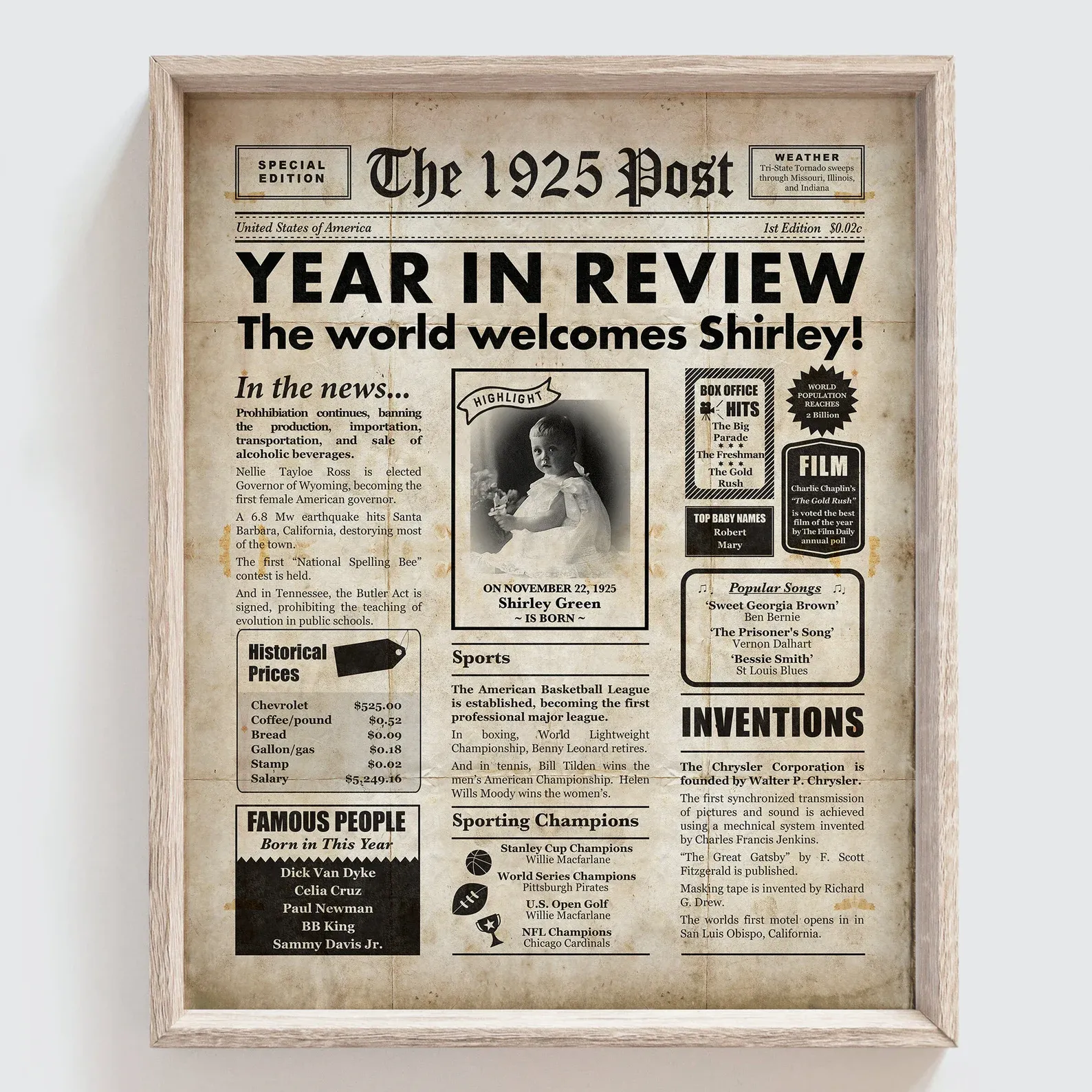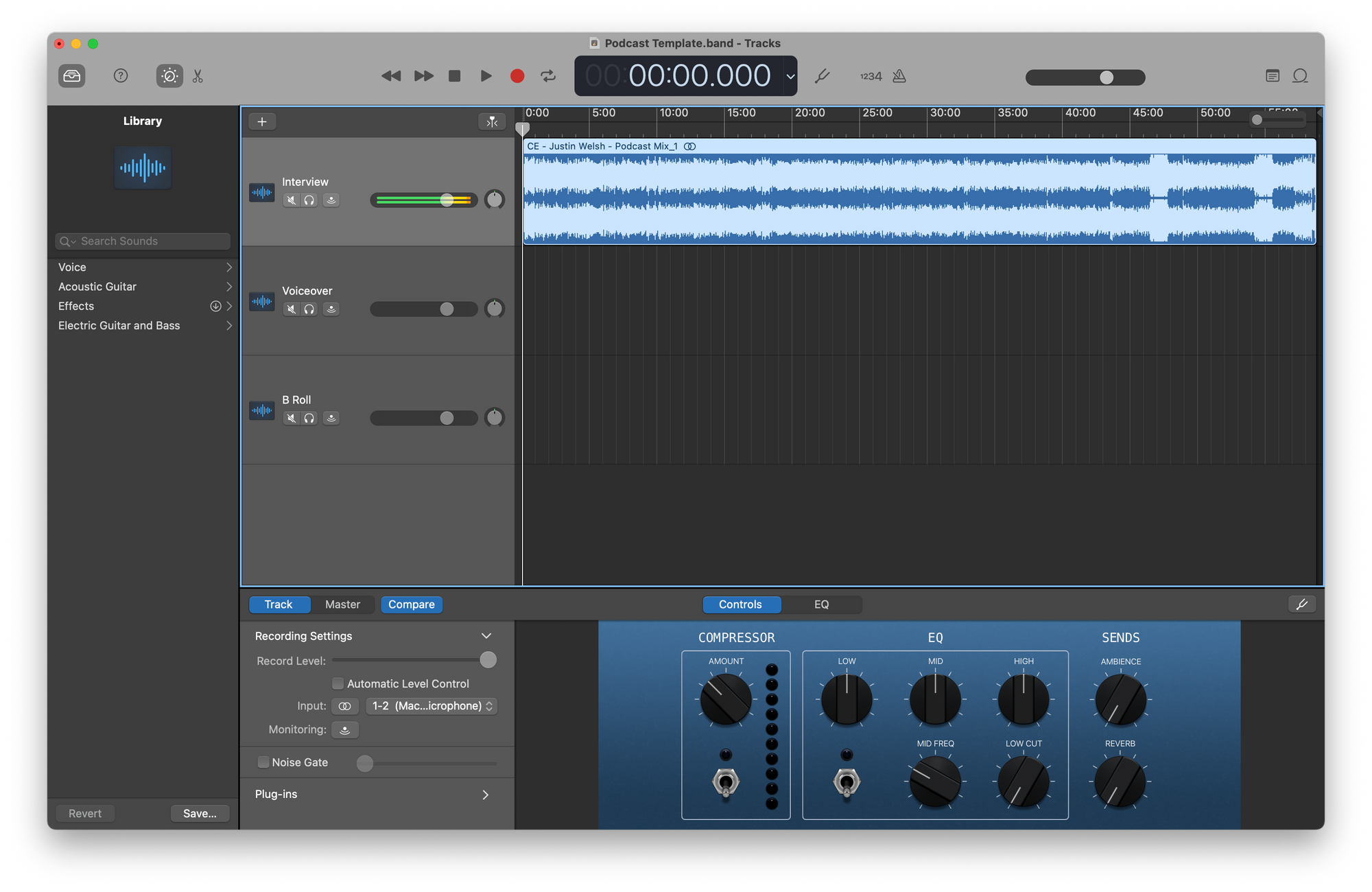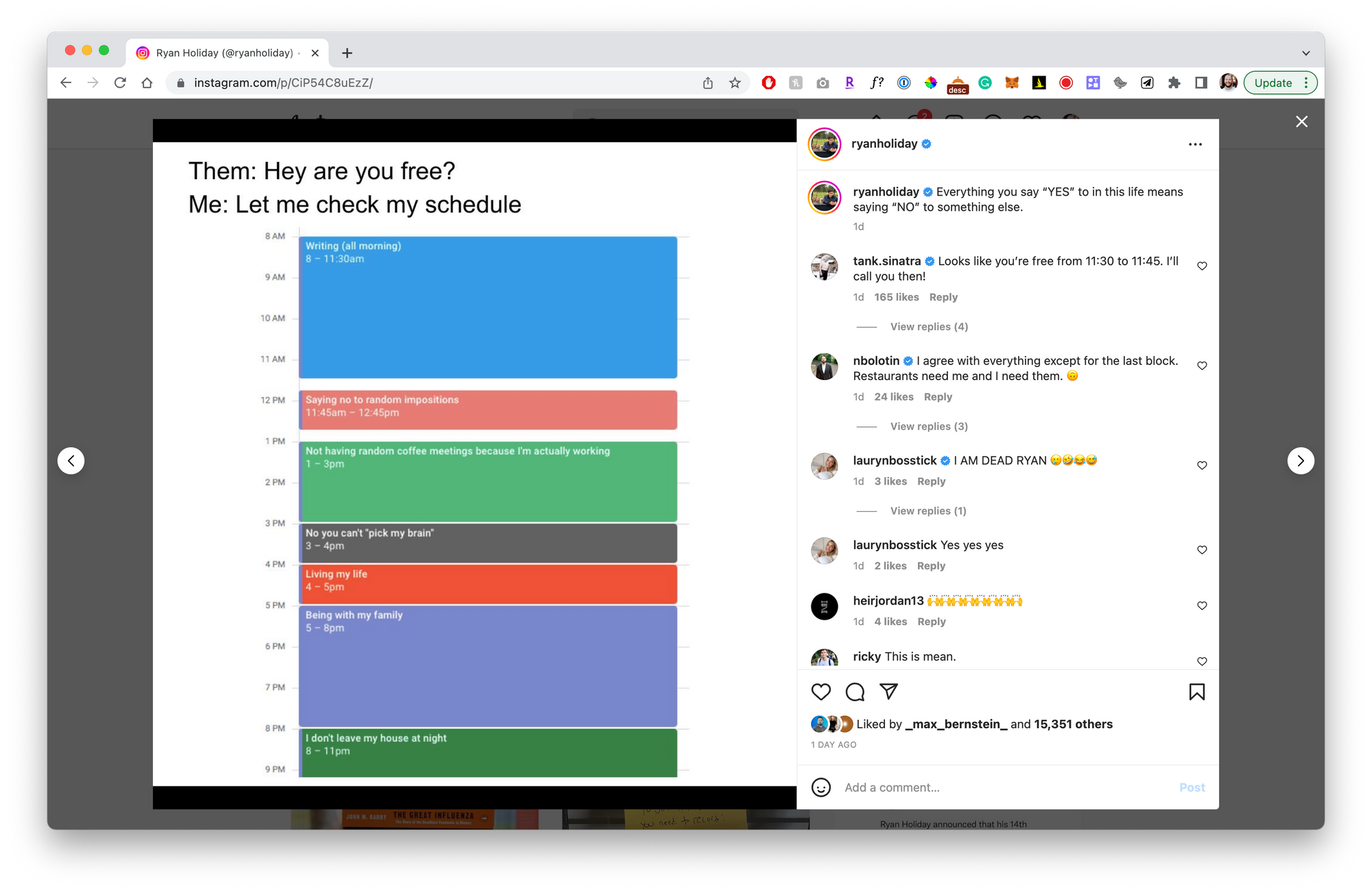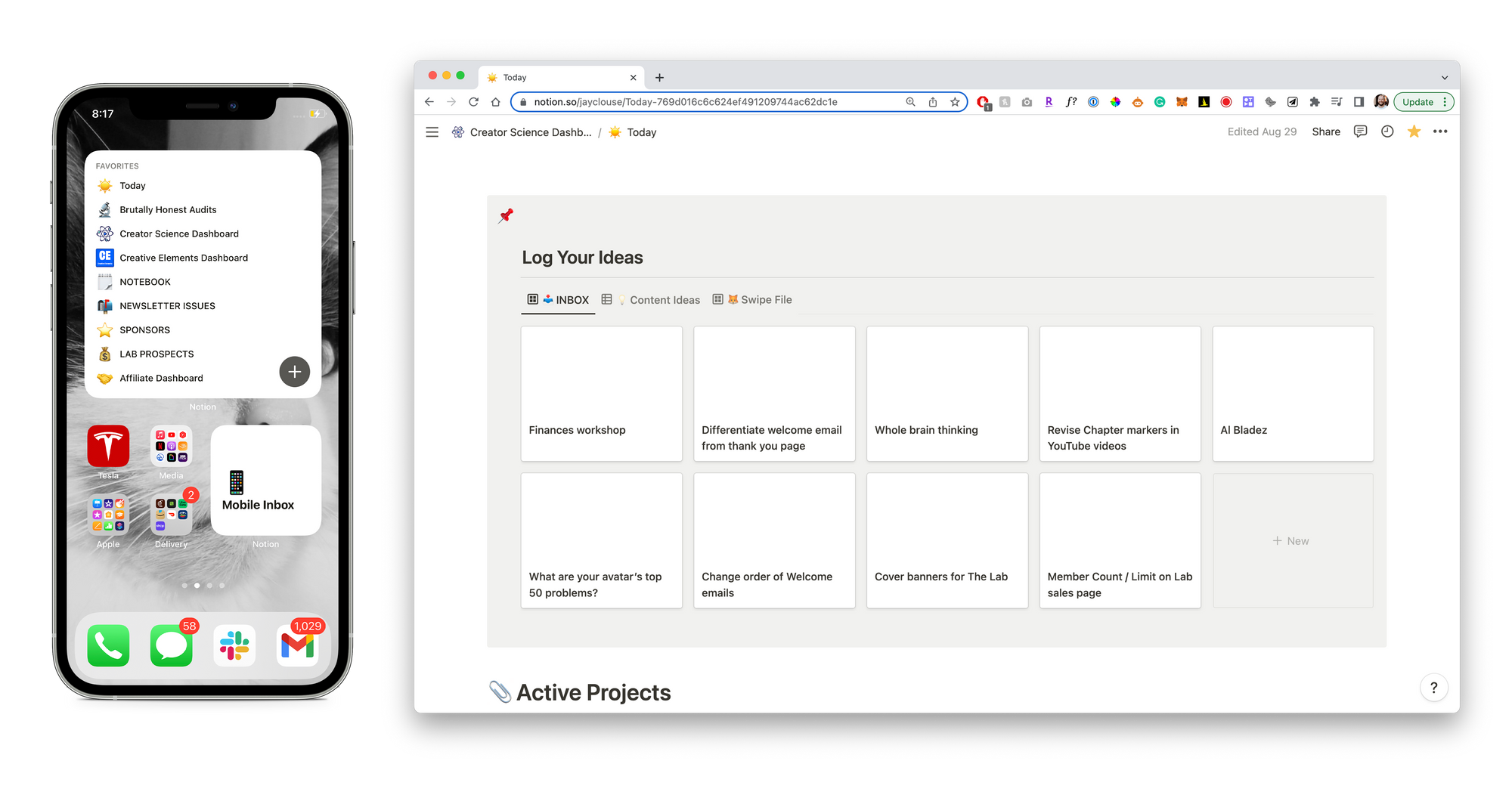In January 2017, I decided that I was going to publish an email newsletter every day for a year. And for 365 days, I did exactly that.
After that year of daily publishing, I realized that I was subjecting my readers to some form of cruel and unusual punishment by force-feeding them half-baked, generally unrelated thoughts…but that didn’t matter. What mattered was that I set an intense goal and succeeded.
Since that first year, I’ve continued to publish this newsletter weekly (often twice weekly) without fail for nearly five years.
And not only that, but I’ve also managed to sustain a weekly podcast (at times TWO weekly podcasts) for several years as well.
As a result, people often ask me how I’m so consistent. To be honest, I’ve struggled to articulate it in the past – it’s just become something that has become second-nature to me.
But I think there are three elements at play for me:
- An incredible fear of public failure
- A deep respect for deadlines
- A system of accountability
I can’t give you my fear of public failure. I can’t make you be mortified by the idea of not following through on a promise you’ve made – and even if I could, I’m not sure I’d want to!
But I’ve been able to take that flaw and made it useful for myself – maybe there’s a “weakness” in your neurology that you can turn into a strength too.
But what I can help you with are deadlines and accountability. Even better, I’ve identified 12 total methods to help you become more consistent.
Let’s talk about all of them.
Set achievable deadlines
For the first two years of college, I studied journalism.
Journalism is based on publishing stories in a physical print layout – think newspapers or magazines. Every time a publication goes to print, there’s an actual person who manages the layout to make sure the words written for THAT edition actually fit within the physical confines of the publication.
It’s literally a word puzzle.

It takes time to do print layout. So, writers are given deadlines for finishing their drafts so that their editors could tighten up the writing and hit their OWN deadline for sending those stories to the layout team.
It’s a chain of dependencies. You need to hit YOUR deadline so that the editor could hit THEIR deadline so that layout could hit THEIR deadline and the publication could go to print in time for the paper to hit the stands in the morning.
That puts a LOT of pressure on your deadline as a writer – if you miss a deadline, your editor (sometimes boss) looks bad and now you either can’t print on time or there’s a blank space in the paper.
Journalism taught me a lot of things…but it really taught me to respect deadlines. Missing a deadline simply wasn’t an option if you wanted to continue to have a job!
As a result, when I was given a deadline, I hit the deadline (again, fear of failure). And over time, this built a strong association in my mind that when I had any deadline…I would hit it. Somehow, some way, I was going to hit that deadline – even if the final product wasn’t as good as I wanted it to be.
I’ve noticed that few creators have this same respect for deadlines.
If your mind doesn’t register a deadline as non-negotiable, you will consistently negotiate yourself out of it.
You need to build a respect for deadlines.
You need to build respect for yourself that when you commit to something, that commitment means something.
If you allow yourself to negotiate your way out of a commitment, your subconscious registers that as an option. And you need to break the cycle.
It’s about trusting the promises you make to yourself – if you can’t trust yourself, why would anyone else?
The first step is setting an achievable deadline. You need to create a pattern of setting a deadline, hitting that deadline, and doing that over and over again. Even if your first several deadlines are almost laughably easy.
If you miss a deadline, you need to wipe your mental slate clean and tell yourself, “I am no longer someone who misses deadlines. That will not happen again.” and start the process over again.
Little by little, you will build the self-respect and expectation that when you commit to a deadline, you hit that deadline. Deadlines become non-negotiable.
Develop a routine
Humans are creatures of habit. You can routinize anything – and for things that feel hard, routines can be very helpful.
When I walk my dog out the back door and into the yard, he goes to the bathroom.
He’s been trained and conditioned that this is the appropriate behavior in that environment. He doesn’t walk onto just any piece of grass and immediately go to the bathroom, but he’s had enough repetitions of going through this specific door and onto this specific area of grass that he’s conditioned to go into potty mode.
That is an environmental trigger. And it’s not just the backyard that creates the trigger – when we approach the backyard from the front of the house, he doesn’t have the same behavior. It’s triggered by going through the backdoor (and fueled even further by my command, “Go potty!”).
You can create environmental triggers for yourself too.
Choose a location for you to do whatever creative act you’re trying to do consistently. It takes time, but you can create a whole chain of actions that condition and prime your mind for this creative work.
For me, it’s going into my basement studio.
When I walk through that doorway and sit down, I’m sending a signal to my body that it’s time to create.
I’ve added a couple other cues too – when I’m trying to write, I listen to lofi music (and that’s about the only time I listen to lofi music).
So now, even if I’m not in the basement, I can turn on lofi music and more quickly get into writing flow (I’m doing it right now as I write this on an airplane)!
You can condition yourself with:
- Locations
- Actions (opening a notebook, grabbing a certain pen, telling yourself some affirmation)
- Music
- Scents (light a candle)!
Define these conditions for your routine and practice them.
Create momentum by taking the first step
When I was editing my own podcast, I knew that I had a solid 4-5 hours of work ahead of me. And knowing that often paralyzed me.
As I sat there paralyzed, the time passed with nothing to show for it…and I began to dread the work even more. I felt terrible that I wasn’t making progress.
I would sometimes waste a solid 4-5 hours just THINKING about getting started.
That all changed when I realized my resistance wasn’t to doing the work…it was to starting the work.
I discovered that all I actually needed to do was create a new Project in GarageBand.
That was it.
As long as I got myself to take the first step and open a new Project, the work would begin.

James Clear talks about this in Atomic Habits. He gives the example that if you want to build a habit of going to the gym, master the first step of putting on your shoes. Then add on the next step of getting out the door…then into the car…then INTO the gym…
You’ll find your point of no return – the threshold YOU need to cross in order to start the process of flow.
If you took a physics class, you may remember the concept of activation energy – the minimum energy required to start a chemical reaction. There can be some energy present...but if it's not enough, nothing happens.
You can create momentum with your work by taking the first step in the work itself…but if you’re really stuck, just create momentum by successfully doing something. Even something small.
Every morning when I wake up, I let the dog outside, feed the pets, clean the litterbox, empty the dishwasher, and make coffee.
I can’t tell you how helpful it is to build that momentum. Even though those tasks aren’t related to the actual work I need to do, I’m stacking up little wins. I’m proving to myself that I can start and finish things today. And that momentum carries me right into the work day.
Break things down into small pieces
Writing a long-form essay every week is still pretty intimidating. Knowing that I likely need to crank out 1,000-3,000 good words each week feels like a pretty tall mountain to climb.
So I break the essay down into little pieces:
- The idea
- The outline
- The body
- Editing
- Publishing
It’s much easier to write when I know what I’m writing about. But even the idea feels too big…until I start making an outline. With an outline (usually headers bulleted lists) I have a bunch of bite-sized topics I can write a few paragraphs about.
This helped me a lot with my podcast editing process too. As I mentioned earlier, editing an episode would take me 4-5 hours – and that felt like a daunting task.
But I realized it was actually three distinct tasks. So instead of thinking of post-production as one 5-hour task, I starting thinking about three smaller tasks:
- Editing/layout (2-3 hours)
- Scripting voiceover (1 hour)
- Recording voiceover (1 hour)
Even more importantly, I realized that these three tasks had high switching costs between them. Part of the reason it felt so hard to do was that I needed different types of energy and focus for each.
So instead of trying to find 5 hours of open space in a day, I would just try to get the first 2-3 hours of editing done early in the week – this was actually pretty straightforward work that required time more than it did creativity.
Scripting would take another hour and would require my mind to be sharp and creative, so I needed that to be done in the morning. Then recording was the quickest and easiest task that really just required me to be in a positive mood.
I stopped dreading this HUGE task of “editing” when I realized I actually had three smaller tasks that I could do throughout the week.
Identify and remove friction
For a long time, I hated doing anything on video.
I’m particular about how things look and feel, so a webcam just isn’t good enough for me. But it was so intimidating to think about getting out a camera, setting up a shot, making sure it had enough battery to do the thing, getting the lighting and settings right…
So every time I had an idea for some video I wanted to make, the amount of work required to do the work I ACTUALLY wanted to do was too daunting.
I had too much friction. And for me to consistently create things on video, I needed to remove that friction.
I worked with a consultant to get my studio setup – they gave me gear recommendations, helped me set it up with the right settings, and helped me get the frame right.
I got a wired battery and leave all the gear (camera, lights) setup in my studio. I never take them down.

Then I connected my lights to an Amazon Echo using smart plugs. I can just walk into the studio and say, “Alexa, turn on studio” and the lights turn on.
Now there is zero friction to recording great looking and sounding video – it’s all ready for me to go.
If there are tasks that YOU just can’t seem to get yourself to do, there are points of friction that you can identify and remove. Whenever a voice inside your head says, “Well I can’t do this right now…” dig deeper and ask yourself, “Why not?”
Whatever the answer is, try and find a way to remove that friction. Make it a non-issue.
The lower the friction to making things, the more things you will make.
Create a system of accountability
It’s really easy to negotiate your way out of a deadline when you’re the only person who knows about that deadline.
It’s a victimless crime, right? If you’re the only person who knows that you didn’t follow through…who can care?
Well, you’re kind of right. You’re robbing the world of your voice, but the world doesn’t know that.
However, you and I both know you WANT to follow through…so you need to find some accountability.
When I started my daily newsletter in 2017, I made it public with MailChimp because I knew my fear of letting people down. If I told people that they’d get an email from me…and they trusted me to follow through…I knew I wouldn’t fail.
Seriously – I’m so good at performing under pressure that I will often put myself in a position where I can fail in order to ensure that I don’t.
Pretty insane, right?
Maybe that works for you, maybe it doesn’t.
You can also just find an accountability buddy. Find one other person who can check in with you and ensure you hit the deadlines you tell them you want to hit.
This gets even more powerful if they have their OWN deadlines – especially if they match yours!
You can scale that up to a whole group of people and now it’s much harder for the whole system to fail. The more people holding you accountable, the less likely you’ll be able to slip through the cracks.

Whether it’s one person, two people, a small group, or your entire audience – declaring your intentions and asking for accountability is a powerful, motivating tool.
Build runway
This is the item on this list I wish I would’ve learned and implemented much, much sooner.
When people think about consistency, they think about the consistency they see. They think about consistently publishing something publicly.
But publishing consistently is actually much easier than creating consistently. You can publish consistently simply by building runway.
“Runway” is a startup term that means the amount of some resource you have before you run out. If you publish weekly and you’ve already written four articles, you’ve bought yourself four weeks of runway before you actually need to create anything else!
The reason most people aren’t consistent is that they have no runway.
You can give yourself an advantage by simply waiting to publish anything until you’ve built yourself a comfortable runway!
Honestly, unless you’re currently benefitting from momentum or you’ve sold space in your work to advertisers, your best move may be to stop publishing entirely for a few weeks in order to simply build runway.
When you don’t have the pressure of a deadline to CREATE something, you will create something that is better and more true to who you are. Pressure to create doesn’t usually result in your best work.
Instead, give yourself space to create without the pressure of a deadline. Build runway. And once you feel like you’ve created sufficient runway that you can consistently publish and carve out time to continue creating…that’s when you start publishing again.
A lot of creators I know use a technique called batching. Instead of trying to create on the same schedule that you publish, put some time aside to create a LOT of things that can be published over time.
You don’t actually need a ton of runway.
Let’s pretend you publish a video on YouTube every week. Even if you have a hard time batch creating, if you’re able to produce three videos over a two-week period, you’re getting ahead of schedule.
You’re building runway.
Do that for a year and you’ll be in a great space.
Say NO to everything else
Being consistent as a creator requires restraint too.
This muscle of setting and hitting deadlines takes time to build. And even once you’ve gotten a few successful cycles in, you may not have truly built that muscle yet.
Your goal should be to become consistent in ONE medium or on ONE platform. Don’t overwhelm the system by trying to do too many things at once.
This requires discipline and it all comes down to saying NO.

Say NO to that podcast idea until you can publish a newsletter every week.
Say NO to starting a YouTube channel until you can publish on TikTok once per day.
Saying NO to the new idea is a hug and a big YES to the habit of consistency you’re already working on.
If you are able to master being consistent in one domain, it’ll be much easier to add in other projects later and utilize that same muscle.
But like someone suddenly trying to squat an extra 100 pounds…if you try to take on too much too quickly, you’ll get crushed under the weight of your ambition.
Generate an idea engine
If you do this creative thing for long enough, you realize you have to publish a LOT of ideas! Who has that many ideas??
It’s actually easier than you think.
When I was starting my writing practice in 2017, Facebook served me an ad for a Masterclass by Steve Martin. In that ad, Steve Martin says, “You are a thought machine. Everything you experience is useable.”
A conversation you have with a friend, family member, or roommate can turn into an idea.
A question you’re asked on a podcast can turn into an idea.
A question someone else is asked on a podcast can turn into an idea.
A YouTube video where someone shares their opinion is a prompt to share your OWN opinion on that topic.
It’s a skill of also observing your life while you’re experiencing it. What opinions do you express throughout the day? What actions do you take that other people in your position may not take? What do you like about that tool you chose to use instead of that other tool?
All of it is material. All of it takes into account some thought pattern or opinion you are having – even if it’s at a subconscious level.
You can even outsource some of this.
When someone subscribes to Creator Science, they get an email from me that asks, “If I were to dedicate an issue of this newsletter to a problem you’re currently facing, what would that be?”
So now, multiple times per day, I receive new content ideas delivered straight to my inbox!
And this past week, I tweeted this:
If I agreed to be your personal creator coach for a month, what would you want me to help you with?
— Jay Clouse (@jayclouse) September 6, 2022
The responses to this Tweet told me two things:
- Problems my audience are facing
- Things my audience perceive me to be GOOD enough at that I can help them
I got so many responses here that I could generate months’ worth of content from them alone. And by the time I run out, enough time has passed that I could simply tweet it again!
Start a note-taking practice
I find that people are actually pretty good at having or noticing ideas in real-time…but they usually come at unpredictable or inconvenient times.
The problem isn’t idea generation – it’s idea documentation.
You need a low-friction way to capture ideas and take notes as they happen.
For a long time, the fastest path from “idea” to “documented idea” for me was sending myself a text message. I’d leave my text messages unread, so the unread messages were a visual cue to document those ideas in my Notes app (Notion) once I was back at my computer.
Recently, I worked with Christina Ciganik in The Lab and actually created a Notion database and widget on my phone home screen:

This adds notes into an “Inbox” database that I can see on my Notion homepage to process later.
Your notes can be sloppy. They only need to make sense to YOU and help you remember the important thoughts you had in the moment.
Don’t break the chain (twice)
Look, no one does this perfectly.
You will fail at times and that is OK. Usually it’s your own fault, but sometimes there are circumstances out of your control.
It’s important to give yourself some grace. Don’t be harder on yourself than you would be to someone else.
…but then you need to wipe the slate clean and start a new streak.
Jerry Seinfeld is famous for his concept of “not breaking the chain.”

The idea is simple – you want to keep your streak going for as long as possible. Think of each successful cycle of consistency as a link in the chain – you don’t want to break the chain.
But sometimes you will.
And when you do, it’s important that you don’t break the chain twice. After that failed cycle, you need to get right back on the horse and start a NEW streak. A new, unbroken chain.
I’m a big fan of making this chain something you can actually visualize. By putting your streak in plain sight, you will have a constant, visual reminder of what your priority is right now.
For some people (myself included) this is incredibly motivating.
Think in years (or decades)
I don’t think being consistent ever becomes true habit. At least for me, there is still willpower required.
There is still resistance.
It’s painful to be consistent…and it’s a natural human response (especially in Western culture) that we want to see the results of that pain and sacrifice ASAP.
But the reality is…you won’t see results quickly. And when you do see results, they won’t be linear – sometimes you take huge steps forward, sometimes you plateau, and sometimes you actually take steps backwards.
On a short time horizon, those periods of stagnation or decay feel terrible. It can be really terrifying to feel like your hard work is actually hurting your progress.
But when you zoom and look at your progress over years, you’ll see that plateaus and downturns happen within a positive overall trend line – you just have to be playing a long enough game.

Don’t just commit to being consistent.
Commit to being consistent for several years – decades if you can.
Conclusion
No one is born to be consistent.
Consistency is a skill you build – and anyone can do it.
Think of the methods I’ve shared here as tools in a toolbelt. You don’t need to use all of them – they can be used individually or together. Some of these methods will work for you better than others.
I’d be willing to bet you know yourself well enough to know which of these tools will naturally complement your own neurology. Give them a shot.
Your streak can start this week…
How long will you keep it going?



Join 54,000+ creators learning from firsthand experiments, expert interviews, and actionable advice every week.